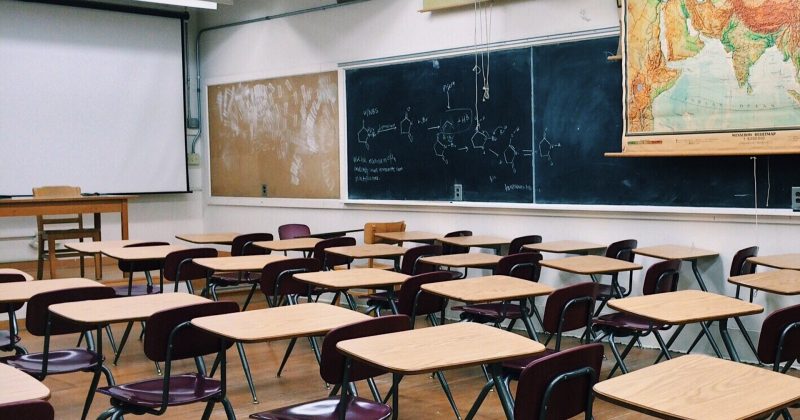Julie Kinnaird | August 16, 2021

There are no boundaries for the reach and impact of the pandemic. In the article, Innovative Ways to Make Coronavirus a Teachable Moment, Edutopia author Sarah Gonser writes that the pandemic “offers teachers the unique instructional opportunity to tap into students’ innate curiosity about the virus and deliver lessons that are timely, prompt kids to dig deep, and—ideally—provide a modicum of comfort during a time of alarming headlines and copious misinformation.” Gonser provides suggestions for math, science, history, journalism teachers and more. As we start the 2021 academic year, how can we teach about the pandemic in our classrooms while at the same time understand that the COVID-19 pandemic may be challenging or upsetting for students who have experienced its devastating effects? Below are several educator resources. Be sensitive and thoughtful in your approach and be sure to recognize students who are struggling.
The Global Oneness Project introduced the 12-minute film, Cocoon, by Andrew Hinton. Through children’s perspectives, the film explores how children felt during the early stages of the pandemic on issues such as school changes, isolation, job loss, and health and well-being of themselves and their families. There are corresponding lesson plans for elementary, middle, and high school grade levels. Lessons include an overview of the ways Covid-19 has impacted society, education, and learning, activities with discussion questions and writing prompts, activities connecting to the UN SDGs, companion texts and secondary resources, updates to current news and events, connections to National Curriculum Standards and Frameworks and are translated into Spanish.
UNC-Chapel Hill’s School of Education has introduced curriculum materials for teaching about Covid-19 through the EPIC Learning site. The materials were created as a part of the Responding to an Emerging Epidemic through Science Education project. They support scientific literacy and allow students to develop science understandings associated with issues related to the pandemic and how science can inform solutions and personal decision-making. Titles of activities include: Model of Viral Spread, Infection Curve Simulation, Social Vulnerabilities and COVID-19, and many more.
The Choices Program at Brown University asks students and educators to reflect on the pandemic events and experiences in their new Teaching with the News unit, Processing the Pandemic: Remembering a Year of COVID-19 through Political Cartoons.
The Pulitzer Center provides stories from grantee journalists around the world. Current stories related to the pandemic include: In Beed, Waiting For A Pandemic Paradigm Shift, ‘We Don’t Want To Go Back To The City’, ‘We’re at the Crossroads’, The Pandemic Plunged Millions of Latin Americans Into Poverty. Its Youth Are Inheriting the Consequences and more. The Pulitzer Center also offers lesson plans to go deeper into learning about the pandemic and its impact on communities. A selection of titles include: ‘Race for the Vaccine’ Curricular Resource, Empowering students to shape pandemic budgets, Pandemic: A Child’s Perspective, Equity and COVID-19, Visualizing The Pandemic: An Exploration in Descriptive Statistics and Personal Stories, The Impact Of The Pandemic In Local And Global Contexts—Understanding My Role In My Community To Change The World.
PBS Learning Media has several short videos and other multimedia files for educators to use to supplement lessons. Check out What is Coronavirus? for young students or Social Justice and the Coronavirus or Immune System Function and Dysfunction | Decoding COVID-19 for secondary school students.
The National Institute of Environmental Health Science (NIEHS) has developed a set of lesson plans on Examining Risk Factors Associated With COVID-19 Using the Pandemic Vulnerability Index for high school students.
The National Science Teaching Association (NSTA) is currently offering a limited number of free lesson plans for elementary, middle, and high school teachers related to teaching about Covid-19. A sample of titles includes How is COVID-19 Impacting Families and Communities?, How Does a Pandemic Cause Less CO2? and Where Do ‘New’ Diseases Come From?.
The New York Times Learning Network has for everyone. Through its page, Coronavirus Resources for Students there are writing prompts, lesson plans and student activities to teach and learn about the pandemic.
Oxfam Education has published a resource for teachers, COVID-19 Responses Around the World: A Teaching Resource for Ages 9-14, that will help learners to: discuss their thoughts and feelings about COVID-19, investigate some of the incredible ways in which people have been responding to this crisis, understand the difference between information, disinformation and misinformation, and consider their own responses to the pandemic and possible actions that they might take to manage their own wellbeing and support others.
National Geographic Learning offers the Explore Inside site that includes blogs, webinars and interdisciplinary K-12 educator resources that provide essential information for students about Covid-19, what they can do to protect themselves, and how they can make a difference. There are reading and discussion lessons, a Global Pandemic lesson, Science Lessons, Finding the First Vaccine lessons, and Infection Control During the Pandemic Lesson.
